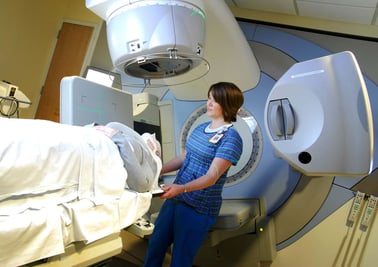This program is not currently accepting applications.
Radiation Therapy Program Curriculum
As a radiation therapy student, you will study the principles of radiation and how they are applied to developing a treatment plan for patients.
You will also study related medical fields such a pathology (the study of disease), oncology (the study of cancer), and radiobiology (how cells react to treatment).
Radiation physics and mathematics used in treatment planning are also part of the program, as are techniques of diagnostic radiology. Because patient contact is a large part of radiation therapy practice, our program includes the study of ethics and emotional and psychological issues in the field.
You may be eligible for transfer credit for courses you've previously completed elsewhere. You can read more in our Transfer Credit Policy.
